The hardest part of securing a European university admission in 2026 isn’t getting accepted—it’s surviving the visa process that follows. Deadlines pile up, document requirements feel endless, and one small error can send your entire application back to square one. Add the pressure of limited scholarship timelines, and suddenly, the dream of studying abroad feels like it’s slipping away.
The truth is, the visa stage can be a make-or-break moment, and treating it casually is a risk you can’t afford.
But, if you have prepared a student visa application checklist, it’ll be a LOT easier to know exactly what to prepare, in the correct order. This guide will help you navigate your student visa application checklist with clarity, confidence, and zero panic. And if you want country-specific details, check out our student permits hub.
1. Determine Your Visa Type
Your first step is to pick the correct visa category.
Short-stay vs long-stay
- Short-stay visa (type C) lets you stay up to 90 days, often for short courses or language programs
- Long-stay or national visa (type D) covers programs over 90 days and usually leads to a residence permit
Residence permit after arrival
Most long-stay visas require you to apply for a residence permit once you’re in the country. For example, in Germany you visit the Ausländerbehörde (foreigner’s office) to register. You’ll need your passport, visa sticker, proof of address, and a biometric photo.
Some countries let you swap your national visa for a permit at a local town hall or prefecture. Confirm timelines online so you don’t miss any deadlines or incur fines.
Now that you know what visa type you’re aiming for, the next step is to check the eligibility criteria for that category.
2. Check Eligibility Requirements
First and foremost, the eligibility requirements are at the top of the student visa application checklist:
Digital acceptance notifications
Check your inbox and student portal regularly, since acceptance letters often arrive digitally.
What does an acceptance letter include
Your acceptance letter usually confirms admission, start date, location, fees due, and any scholarship details.
Language requirements
Different programs ask for English or local language proficiency. Most require a CEFR B1 or B2 level. Official test results from IELTS, TOEFL, or local exams are accepted. Some universities even take Duolingo scores. Check expiry dates too—many tests are valid for two years.
Criminal record check
Many consulates ask for a recent police clearance certificate. Contact your local police or ministry to obtain one. It might need an apostille or legalization from your foreign affairs office. Plan at least four weeks to get this.
Need a full walkthrough? Our step-by-step guide for the student permit has you covered.
3. Gather Essential Documents
Here’s a quick rundown of core papers for a student visa application to a European university admission 2026. You’ll want paper copies and scanned PDFs ready.
- Valid passport (at least six months beyond your planned stay)
- Recent passport-size photos (usually two, check embassy specs)
- Official university acceptance letter
- Proof of tuition deposit payment (receipt or bank transfer record)
- Academic transcripts and diplomas (certified translations if needed)
- Language test scores (IELTS, TOEFL, or as required)
- CV or resume (only if specified)
- Motivation letter or statement of purpose (if requested)
Organize physical and digital copies
Keep originals in a clear folder with separators for each document type. Scan everything in high resolution, and name files like “passportmain.pdf” or “transcripteng.pdf.” Back up to a secure cloud folder so you can access them anywhere.
Legalization and translation requirements
Some countries require an apostille on diplomas and transcripts. You get an apostille from the designated authority in your home country. For translations, use a certified translator recognized by your host country. Attach the translator’s certificate to your visa packet.
4. Confirm Health Insurance Coverage
The next item in the student visa application checklist is health coverage. Your plan must cover medical treatment, repatriation, and emergency evacuation.
Choose the right policy
Check minimum coverage amounts on your consulate’s website. You can pick an EU policy or an international student plan. Compare prices, coverage limits, and deductibles to find the best fit.
How to apply for a waiver
If your university offers its own health insurance, it may let you opt out by showing proof of a private policy. Usually you fill out a waiver form and attach your policy’s coverage details. Submit it before the visa appointment deadline.
5. Show Proof of Funds
Visa offices want proof that you can support yourself financially. Required amounts for student visas vary by country but often cover one year of tuition and living expenses.
Common documents include:
- Bank statements showing an adequate balance for at least six months
- Scholarship award letter specifying the amount and conditions
- Loan approval letter with loan terms and disbursement dates
- Employer letter stating your or your sponsor’s annual income
- Savings or investment certificates (CDs, bonds)
If your letter doesn’t mention scholarships, contact admissions; awards often arrive separately.
Estimate your expenses
Create a budget for tuition, rent, food, transport, books, and leisure. Most students plan about €800 to €1,200 per month, but costs vary by city. Use reliable cost-of-living sites to research your destination.
Open a blocked account
In Germany and some other countries, you need a blocked account (Sperrkonto). You deposit a fixed amount and withdraw a monthly stipend. Banks like Deutsche Bank or Fintiba offer this service. Follow the bank’s instructions for visa certification.
6. Secure Accommodation Proof
After fulfilling all those requirements, embassies often ask for proof of accommodation. Your document options include:
- Dormitory booking confirmation letter
- Private rental contract with the landlord’s signature
- Host family invitation letter (with address details)
- Hotel reservation for the initial weeks (if you finalize housing later)
Make sure dates cover at least your first semester or initial program period.
Temporary housing options
If you haven’t found permanent housing, book a hostel or Airbnb for up to a month. Show a reservation that covers your first arrival period. You can update your visa office later once you lock in a dorm spot or apartment.
Getting a tenancy contract
For private rentals, landlords often provide a letter stating your name, address, and rental term. Ask if they can translate it to English or the host language. Some embassies require a stamped contract with a landlord’s signature.
That’s all you need for a visa application for European universities in 2026. But that’s not enough. Scroll down to find the visa fees and timeline.
Understand Fees and Timelines
For most of the European universities, visa process doesn’t take much longer. Here is a quick overview of all necessary information you need;
Visa fees
Visa fees vary but most student visas cost between €60 and €120. Payment methods can include cash, postal order, or credit card. Always confirm the exact fee on the embassy’s website before your appointment.
Processing times
Standard processing takes four to eight weeks. Some countries offer fast-track options for an extra fee. Submit your application at least three months before your course starts to allow for delays.
Complete Visa Application Form
Most countries require an official form you fill out online or on paper. You’ll need to provide personal data, travel history, and program details.
Navigating embassy portals
Countries like France use Campus France, while Italy has Universitaly. Create an account, choose your study category, and upload documents in PDF. You’ll get a confirmation and appointment slot through the portal.
Filling paper forms
For embassies without e-visa, download the PDF form, print in color if asked, fill in block letters, and sign. Don’t leave blanks—write N/A if something doesn’t apply. Double-check spelling for your personal details.
Attend a Visa Interview
Attending a visa interview is a crucial step to completing your student visa application checklist. Once you’ve submitted your application, you’ll get an interview appointment. Bring all originals, plus copies, neatly organized in a folder. Answer questions clearly, stay calm, and be honest about your study plans.
Typical interview questions
Here’s a list of interview questions for a Schengen visa application:
- Why did you choose this program and country?
- How will you fund your studies and living expenses?
- What are your plans after graduation?
- Do you have family or friends in the host country?
Common slip-ups to avoid
Don’t guess or lie about your finances, study plans, or ties to home. Avoid slang or jokes—keep it professional but friendly. If you’re unsure about a question, ask the officer to clarify. Learn from common mistakes on student visa applications so you avoid pitfalls.
Plan Your Travel Arrangements
After your visa arrives, check entry windows and visa validity dates. Book your flight and aim to arrive at least one week before classes start. Contact your school’s international office to arrange airport pickup if offered.
Register with your embassy
Most embassies have a free registration to help you in emergencies. It can fast-track support if something goes wrong.
Banking and mobile setup
Before you leave, inform your bank of your travel dates to avoid card blocks. Consider opening an account in advance with a global bank. Also check mobile phone plans—some allow European eSIMs you can activate from home.
Track Application Status
Most embassies let you check status online with your application number. If processing takes longer than the posted timeline, reach out to the consulate. Keep your contact details current so the visa office can reach you.
Using email alerts
If you gave an email during your appointment, the visa office may send status updates. Check your spam folder too.
Requesting updates
If you’re past the published processing time, send a polite email to the visa section. Include your name, file number, and appointment date.
Complete Post-arrival Formalities
You need to ensure post-arrival formalities before you even reach Europe. Here are the things you need to do once you arrive in Europe;
Register your residence
In many European countries, you must register at the local town hall or foreigner’s office within two weeks. You’ll need your visa, passport, proof of address, and a registration form. Missing this deadline can lead to fines.
Get your residence permit card
After registering, you’ll get an appointment to pick up your biometric residence permit. This card is your official proof of legal status. Carry it with you whenever you leave the country.
Open a local bank account
A local account helps with rent, tuition, and daily expenses. You’ll need your permit card, passport, and proof of address. Some banks offer student accounts with low fees.
Review final tips
- Make color and black & white photocopies of all documents
- Translate non-English papers and get certified translations
- Keep digital backups in a secured cloud folder
- Schedule a buffer day before the embassy deadline
- Double-check all forms for signatures and dates
Avoid last-minute scrambles
Start the whole process at least three months before your departure. That gives you a buffer for any missing docs or delays.
Stay organized
Use a dedicated checklist app or notebook. Update it as you tick off each item. Print the final version and keep it with you on the day of your interview.
Final Words
That’s your student visa application checklist to get admission in 2026. After reading this guide, you’re all set to tackle the visa process like a pro. Need a country-specific checklist? Head to the EU Info Hub for detailed lists per destination. If you have any questions, drop them in the comments below so we can help you out.

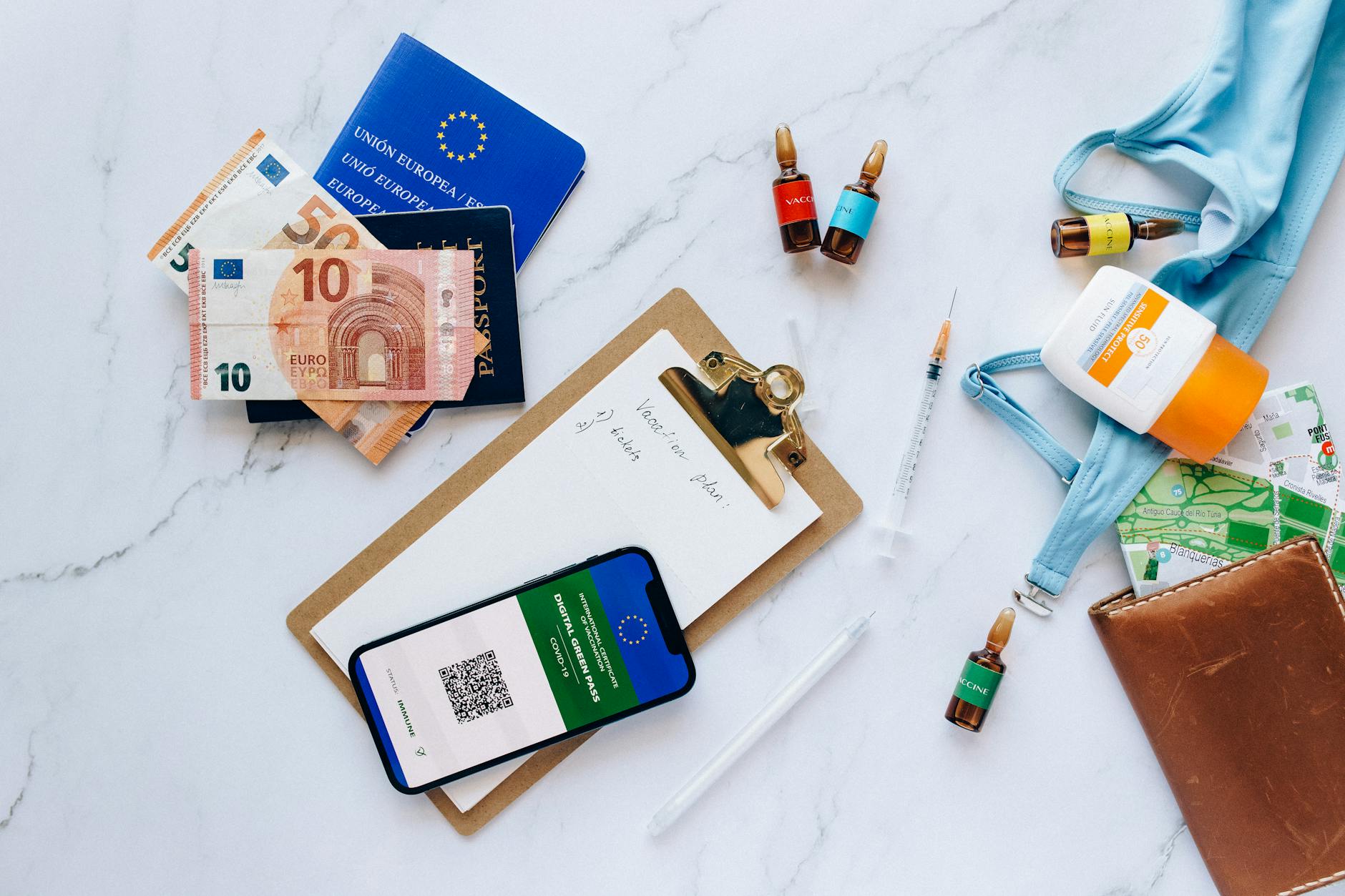


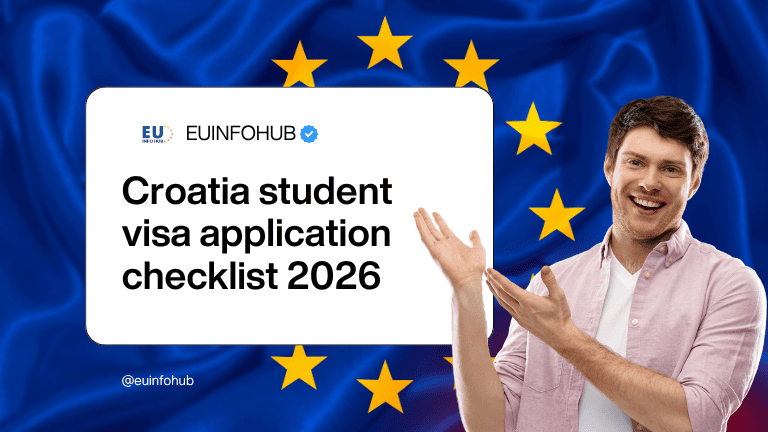
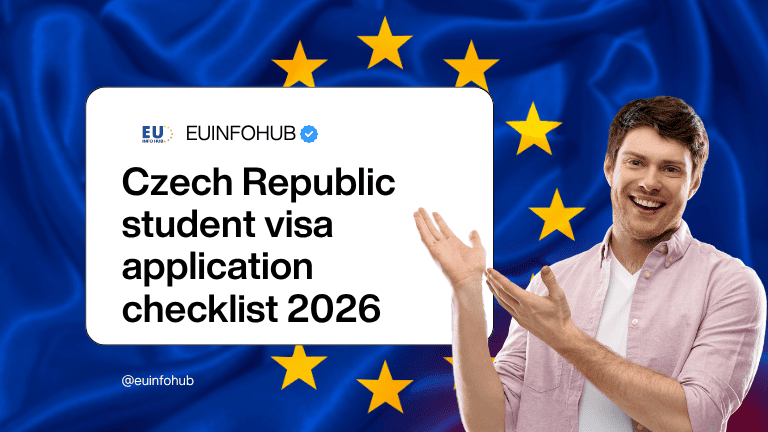
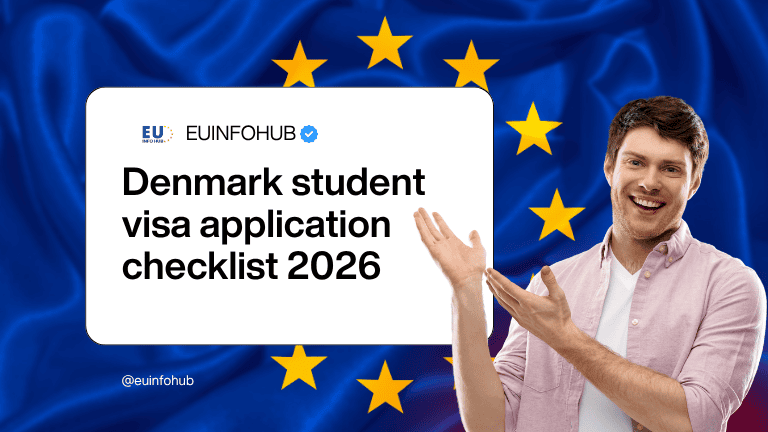
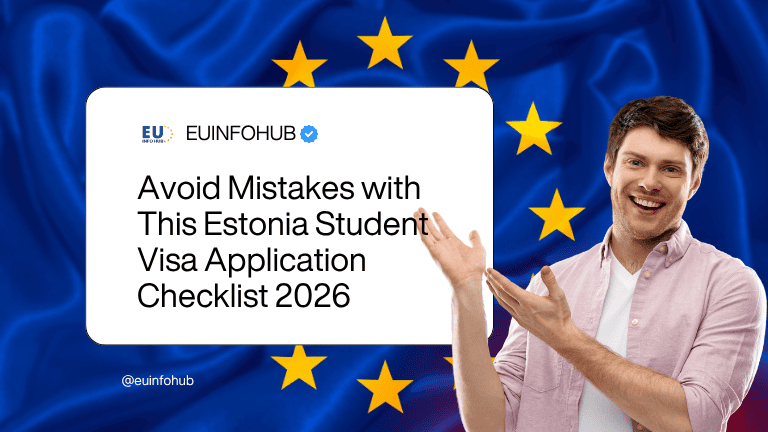

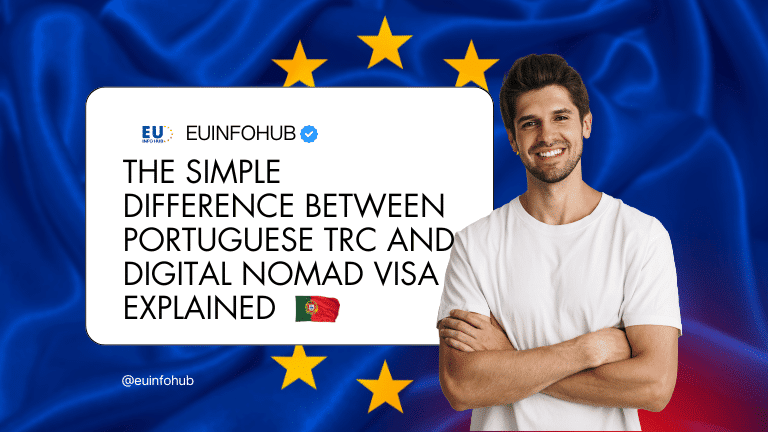
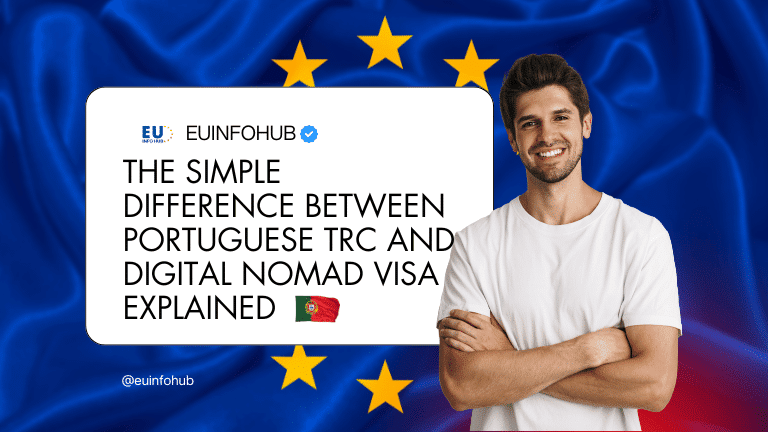


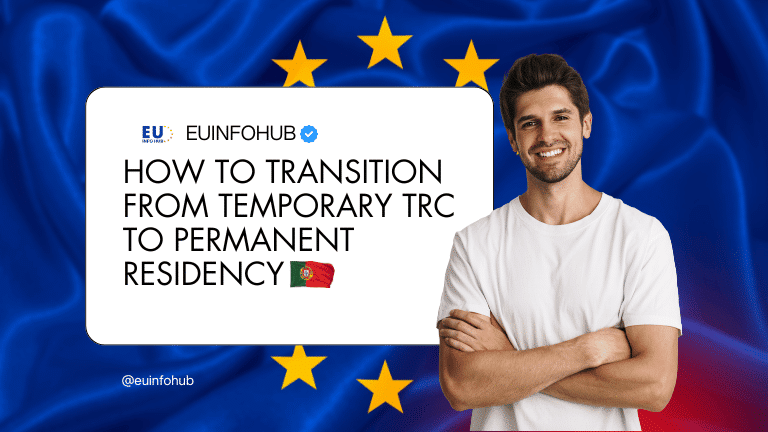
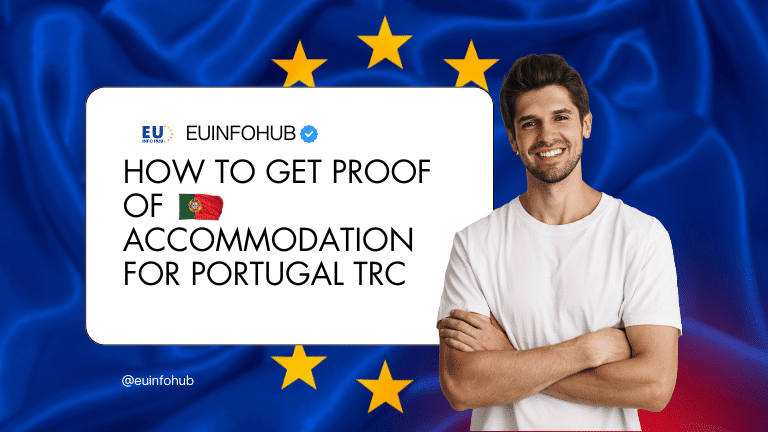

8 thoughts on “Navigate Your Student Visa Application Checklist Like a Pro”